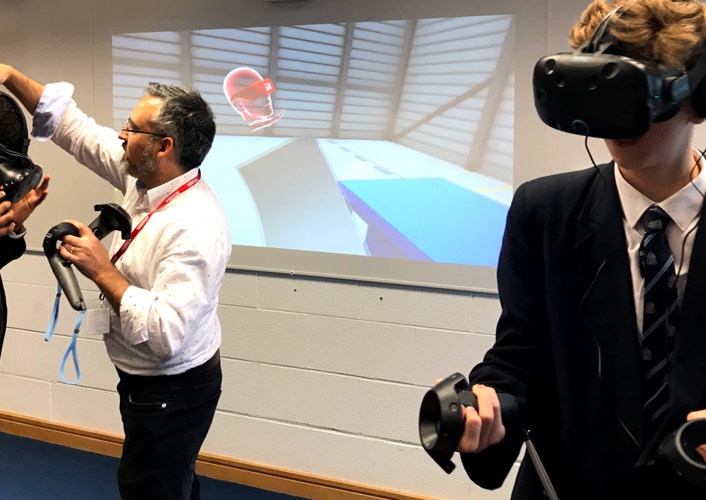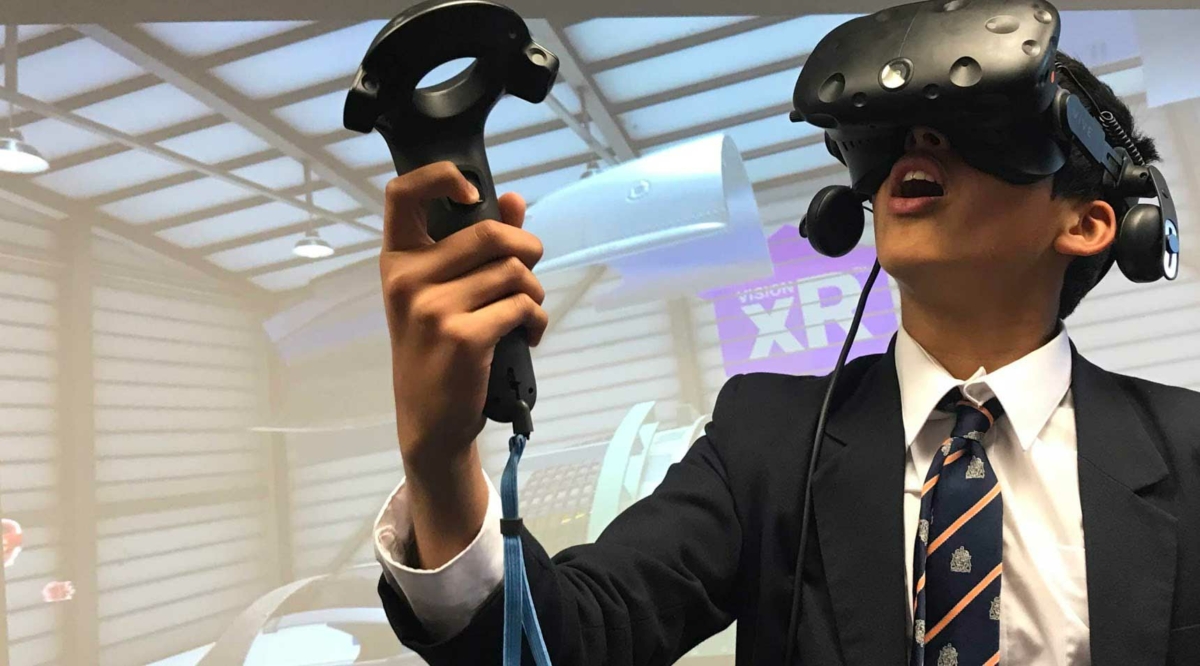Thought Piece: Not too early to start using VR

Why it is (definitely) not too early for schools to start using VR
There is a quote which goes something like this… ‘There are those that think VR is going to change the world and there are those that have not tried it yet’. Of course, this is just the kind of statement that screams ‘I am a hype-driven marketing person who has no real idea what I am talking about’, hence I don’t repeat it very often.
Deep down I do believe it though, but my understanding of what VR will become is not necessarily the same as someone who has tried some dodgy zombie ‘VR’ experience on a phone and felt sick after 2 minutes.
Just because I have travelled into a human cell and hitched a ride with a Kinesin along a microtubule or performed repairs to the outside of the International Space Station does not mean I want virtual cups of tea in it though. When it comes to new technologies like virtual and augmented reality, the key is to ask the right questions… ‘how does this add value?’, ‘What specifically does this do better than anything else and in what situations?’. Many people I speak to are either too taken in by the hype or they think it’s a bit gimmicky. Either extreme is unhelpful.
Why should I care about immersive technology in schools?
- Immersive visualisation is a very powerful way to understand and remember anything you are taught. It is the closest possible way to showing something live that cannot easily be demonstrated.
- We learn a lot faster when we have an experience of something. You can’t learn to fly a plane by reading about it or even watching a video, you need experience, you need feedback.
- Our memory is a lot stronger when we have a deeper engagement and are more focused while learning about something. Retention rates are typically up from 15-20% to 75-80%
- Improved empathy and deep appreciation of the point of view of others from any age, background or condition.
- Most industries are already trialling or benefitting from XR technologies. By the time students start their first jobs they will be required to understand and use them.
- Children will encounter XR outside of school and find the content very exciting. Why not make lessons equally engaging?
Why are immersive technologies so powerful?
- They are stereoscopic so mimic the way we perceive depth and scale in real life.
- Everything is at a 1:1 scale so our brain can relate everything to how we fit into what we are seeing. No other digital medium can be seen at 1:1 scale (even on a large screen).
- Being able to look where you want, and often move where you want, gives people a feeling of independence and freedom to explore the scene from a point of view of their choosing.
- Tracked hands and interactivity gives people a feeling of agency, a sense of being able to influence and engage with the virtual world.
- Networking units together allows multiple people, even in different locations, to learn from each other and work together.
What are Immersive technologies?

Virtual Reality (VR) and Augmented Reality (AR) are loose terms that encompass many types of immersive and spatial 3D visualisation technologies, these are increasingly known as XR technologies. XR technologies rely on being able to see what things look like from any point of view you might choose. Basic systems allow a person to look around in all directions from a fixed position whereas more advanced systems allow a person to move about and look in all directions. Some systems are connected to a computer and others are mobile. Some cut you off from your surroundings and others add 3D content into your surroundings. Some employ a smart device, others a head mounted display. All the technologies ‘immerse’ you in the computer generated or pre-recorded images in such a way that your brain starts to believe that you are experiencing something live in front of you where you can control how it is experienced.
What is the status quo?
It would be fair to say that most schools have either not tried VR at all or have done limited experiments with basic mobile devices that show 360 degree scenes. Through the ISC Digital Strategy Group, we have lent out computers and headsets to several schools in order for them to experience higher-end VR for one person at a time. The results of their finding can be found in the ‘Growth Headset’ report recently compiled by Dr James Mannion. Some schools are even further ahead and have already purchased their own headsets and conducted trials with students into different applications currently available and some of these are discussed in the report.
In China we are seeing schools experimenting with high-end mobile devices for whole classes at a time. In many universities now, VR is becoming a standard tool for teaching complex subjects particularly in health and engineering training applications.
What’s needs to happen next?
On the 29th November 2018 the Independent Schools Council – Digital Strategy Group had their annual conference at Radley College in Oxfordshire. This was a chance for schools to hear more about where things are going and try out new technologies such as collaborative XR. After talking with many staff from schools that attended, I was able to identify some of the next steps that need to be taken for schools to move forward with immersive technologies.
There is no doubt XR technologies can and will completely transform certain areas of learning, the question is which? The key is not to wait for others to show you what you can do with it or create the right content for you. It’s a media device like a television, what others do with it might be different to what you could do with it.
You don’t need to wait for Microsoft and Google to tell you what to do. Roll up your sleeves and start experimenting, it does NOT need to cost much money to get started and you certainly don’t need a degree in software development to start creating your own lesson material.
What subject matter would benefit most from virtual reconstruction? What students might benefit the most from immersive engagement?
Share trial VR lesson content amongst other schools, rate what works in which situations, share your findings. Start an inter-school XR club, meet every week in VR and learn from each other. Invest in something like the Vuze XR Camera and get the students sharing their immersive stories with other schools even in other countries.
To help the ISC-DSG better understand where schools are with immersive technologies we have compiled a very short questionnaire. We would really appreciate your feedback and will not be contacting schools unless they expressly ask us to.
If you would like any help whatsoever with XR , you may email me any time: nathan.gaydhani@systemactive.com
Nathan Gaydhani is Head of Professional Services for leading technology solutions provider SystemActive. Nathan has been a full-time professional VR consultant for 4 years and prior to that ran a business helping schools to promote and differentiate themselves. Nathan has a first-class degree in Digital Imaging.
SystemActive are a specialist solutions reseller of highend compute products such as Workstations and visualisation technologies and offer workflow consultancy for organisations across multiple vertical industries both new and emerging.
in the news today…
A new study shows Virtual reality (VR) is the most engaging and emotionally positive learning method in comparison to textbook learning and video. Read more at: https://phys.org/news/2018-12-vr-engaging-video-textbooks-classroom.html
